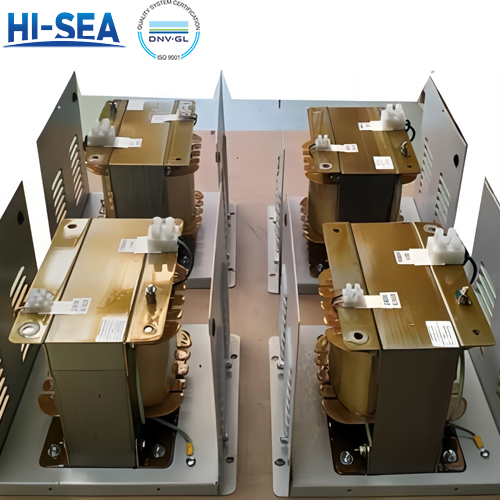
Key factors to consider when selecting marine transformers
When selecting marine transformers, several key factors must be considered:
1. High-temperature resistance
2. Moisture resistance
3. Corrosion resistance
4. Isolation voltage
Overview
High-Temperature Resistance
Marine transformers generate significant heat during operation, and the confined space on ships often has poor ventilation. Therefore, excellent high-temperature performance is essential. This performance is dependant on the transformer's insulation materials and cooling methods.
Moisture Resistance
Marine transformers are exposed to high humidity and seawater corrosion during operation. Special moisture-resistant treatments are required to withstand these conditions, ensuring stable operation in humid environments both inside and outside the cabin.
Corrosion Resistance
Long-term exposure to seawater requires marine transformers to have strong corrosion resistance. They are made from corrosion-resistant materials, such as high-strength surface coatings and durable metal casings, effectively preventing seawater corrosion and extending the equipment's lifespan.
Isolation Power Supply
Marine transformers must have the function of isolation power. Isolation transformers ensure safety by separating the ship's power system from shore power, preventing fault currents from passing through the water, thereby safeguarding onboard equipment and personnel.
In summary, marine transformers should possess the features of high-temperature resistance, moisture resistance, corrosion resistance, and isolation voltage. When selecting models and specifications, it is crucial to consider the specific needs and environmental conditions of the vessel to ensure the marine transformer provides safe, stable, and efficient power for the ship's electrical system, supporting its daily transportation and long voyages reliably.





